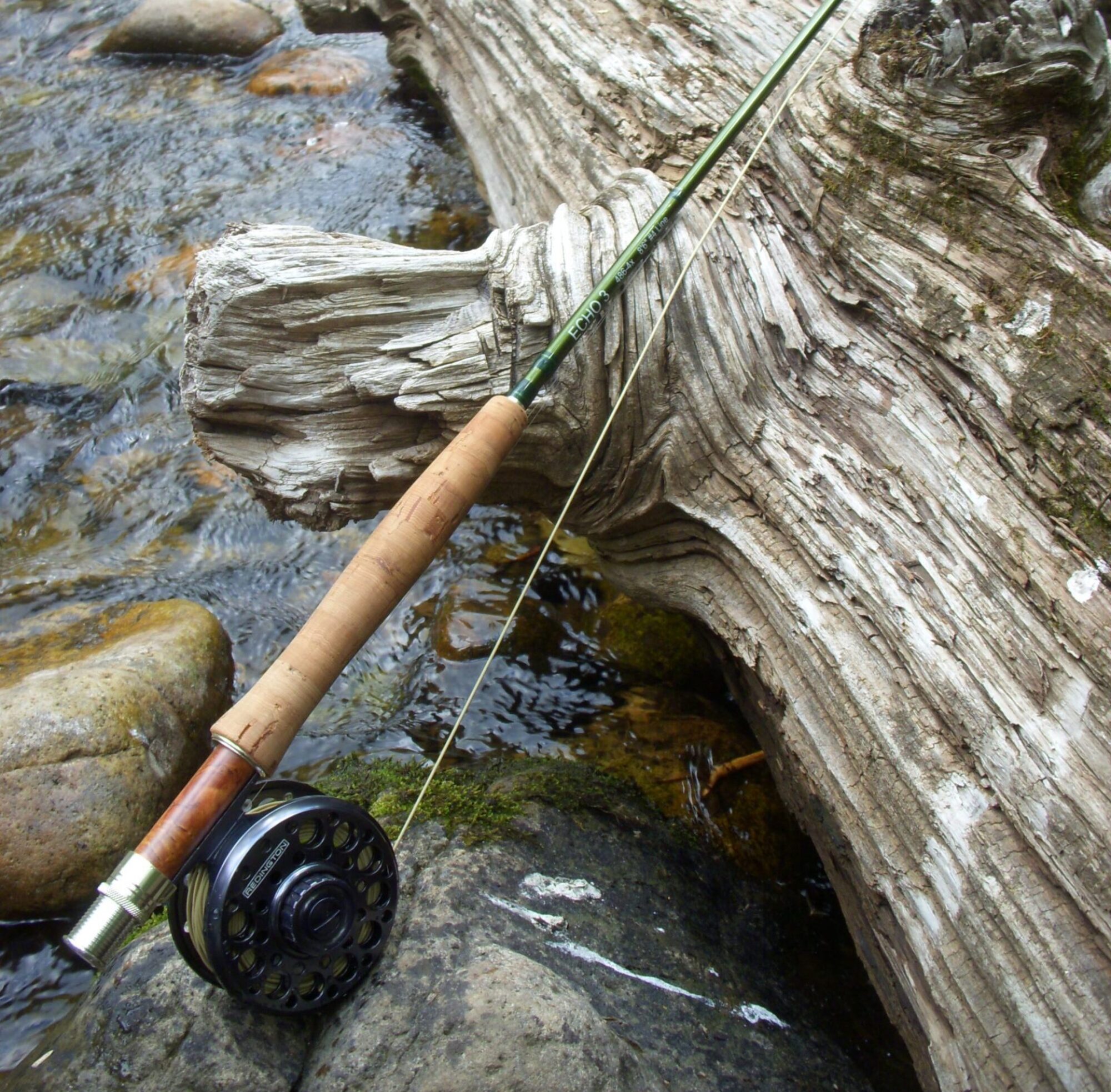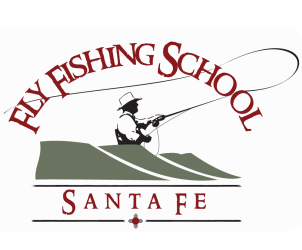Introduction
A relatively common question posed by people new to fly fishing is what is the right fly rod to buy. This may be a relatively easy question to answer for folks who live in areas that are relatively homogeneous in the fisheries available in their area. For those of us who live on the Texas coast, where our fishing diversity is extremely varied (perch to marlin), answering that question is usually filled with a bunch of qualifiers and often turns into a game of 20 questions. I will attempt, in the following article, to answer this question in the manner that I use when it’s posed to me in a class or private lesson and I’ll especially keep the first-time buyer in mind. Much of what I have to say can be found on any of the rod manufacturer’s websites, but here I hope to keep things as brand agnostic as possible. There is no one fly rod that will work in all situations. When purchasing one rod and fishing in a heterogeneous fishing environment like the most coastal areas, you are going to be looking for the best compromise rod.
Primary Considerations
-
Budget
For most new fly fishers, budget is an important factor in the choice of their first rod. They’re not sure that they will get into fly fishing in a way that would justify spending large sums of money. When I tell new clients that the low end, cost of entry is around $200, I get a gasp. As a general rule, fly fishing equipment will generally cost more than a conventional tackle rig. Many of the clients I teach are couples; this means fly fishing gear costs twice as much.
Modern fly rods cost between $100 and $1100, with some of the handcrafted bamboo rods exceeding $2500. My survey of the major manufacturers of fly rods has shown that there are about three price points for fly rods:
The decision about how much to spend is very personal and often leads to a lot of compromises. Most people, in the beginning, aren’t certain whether fly fishing is something that they’ll take up in a way that justifies a large purchase, which usually drives them to be lower cost choice. I think that if you are pretty likely to stay interested in fly fishing past the beginner phase, and you have the means and inclination to buy more expensive equipment, then you should go ahead and buy in the higher price range. You’re not likely to have buyer’s remorse that you bought the wrong thing. I personally, started buying the Sage VPS series of rods when I started buying rods. At the time, it was a rod that cost around $350. I filled in my initial purchase of a 6 weight, with 4, 5, and 8 weight rods as my fishing diversified. Not until my casting changed dramatically, did I switch to another rod type within the Sage line.
-
Species – Fisheries/Type of water to be fished
The species and size of fish that you will be fishing will help narrow down some aspects of the selection. Initially, the choice is between freshwater and saltwater. If you’re going to exclusively fish for saltwater fish, then you need to look at rods that are designed to withstand the punishment of a salty environment, with such things as anodized guides and reel seats, faster rod action and fighting butts. That’s not to say that a good freshwater rod can’t be used in the saltwater, but it may not be manufactured to withstand the harsh environment as well as one manufactured for saltwater. This choice will also help with the little fish/big fish question. Larger fish generally are fished using a higher weight rod, 6 weight and above. Conversely smaller fish are fished with smaller weight rods, 5 weight and below.
-
Environmental conditions
Environmental conditions where you’re fishing will dictate to a certain extent the action of the rod that you should be casting. This is closely related to species, in that the fishing environment and the species are closely connected. In a saltwater environment, the fisherman is most likely going to be exposed to some amount of wind, ranging from a little bit to “hang on to your hat” wind. A faster action rod is going to be needed in this situation. Wind will bend your rod during the cast; a slower action rod will bend more than a fast action rod, meaning that it will be more difficult to cast a slower action rod in the wind.
-
Length
The length of rod that you select is a function of a number of factors: the type of fish you are targeting, the method of fishing you are using, and the platform you’re fishing from, just to name a few. For folks who are purchasing their first rod and aren’t initially focused on a niche, the 9 foot fly rod is the best choice.
Shorter fly rods, 6 to 8 ½ feet, are used on smaller streams with smaller flies in which you are mostly casting shorter distances and you have to contend with environmental issues like extreme vegetation or there’s a need for a more delicate presentation. The shorter length rod is usually used in combination with a smaller rod weight in the triple 0 – 4 weight range.
Longer fly rods, 9 ½ to 15 feet, are used on larger rivers, lakes, coastal bay areas, or for special fishing applications like nymphing or spey casting. Longer rods are usually associated with a larger rod weight in the 5-14 weight range. 10 and 11 foot 4 weight rods are available for nymph fisherman. Longer rods help the fly fisherman cast farther distances or add additional length for situations like fishing from a kayak or float tube.
-
Determine the type of rod action
The action of a rod needs a little definition before we proceed. Rod action defines where the rod flexes in the different sections of the rod. If the rod bends or flexes through the butt section, its action is considered Slow. If the bends down to the middle section, it’s Medium Action. Rods which flex in the upper third section are considered Medium Fast Action. Finally, a rod which flexes in the top quarter of the rod or the tip section is considered a Fast Action rod. .
This is a tough choice to make as a beginning fly fisherman. You may start out casting pretty well with a medium action rod and end up with a pretty aggressive casting style that works best with a fast action rod. This happened to me.
-
Casting style
This is a harder factor to consider when purchasing a rod for the first time. If you haven’t much casting experience, you’re casting style is likely to change a bit to a lot as you advance through skill levels. The rod that you might work well for you initially may not be the rod that you’ll like as you become more proficient at casting.
Secondary Considerations:
Brand
Brand choice in a fly rod is really very subjective. Modern fly rod building technology is highly sophisticated and provides the ability to purchase a good fly rod from most manufacturers. All of the US domestic rod manufacturers including, Echo, Sage, R.L. Winston, Scott, Temple Fork, Orvis, St Croix, make excellent rods in their product lines. Within each brand you will find a good fly rod that meets your specific needs.
Marketing often drives the average fly fishing consumer to select a particular brand. Look at the pro staff that’s associated with the major brands and you’ll find names of people who are iconic in the fly fishing industry. As a new purchaser of a fly rod, the only way you can wade through this portion of your selection is to try as many as you can and compare similar rod types between brands. Ultimately, this is going to be the least important choice you make as a fly fishing consumer.
A non-exhaustive list of brand names in fly rod manufacturing are: Sage, Echo, R.L. Winston, Scott, Orvis, Temple Fork Outfitters (TFO), G. Loomis, Thomas and Thomas, Hardy, St. Croix, Redington; big box brands: Cabela’s and Bass Pro Shop.
Where to buy: fly shop or internet?
I believe it’s important to support your local fly shop; their survival depends on local customers. If you want to have that resource in you community, you have to support it, otherwise it will go away and you’ll have no other recourse but the internet. I travel a lot and I extend that local concept to some of my favorite fly shops in places that I frequent, and for the same reasons.
Rod manufacturers don’t allow their dealers to discount their products, so you can’t shop around and find a better price on a rod by itself. You may find a deal on a combination of rod, reel and line from some fly shops and online dealers. Be wary of buying used rods, the warranties don’t transfer and the condition of the rod may be worse that initially apparent in a picture. A relatively innocuous nick on the rod, may result in a broken rod during a cast that stresses the rod.
Warranties
Unconditional lifetime warranties have become the norm with modern fly rods being offered across the spectrum of fly rod manufacturers. Generally these warranties cover the repair of a broken rod for some fee between $40 and $60, which covers shipping and handling. The rod must be have a registered serial number and held by the original owner. In many cases, the manufacturer reserves the right to send a replacement rather than repair the rod. These warranties also don’t cover loss or theft of the rod.
Manufacturers that offer this type of warranty are: Sage, R.L. Winston, Echo, Temple Fork Outfitters, Scott, Orvis, and some St Croix
Limited lifetime warranties:
G Loomis, Thomas and Thomas, some St. Croix
Buy American
Rods priced at the lower end of the price spectrum, usually up to $350, are generally manufactured offshore in places like Korea or China. There are notable exceptions like Sage. If it’s important to you that you are buying American, you should ask the dealer that you’re buying the rod from. I know that Sage, Scott, R.L. Winston, some Orvis, some St Croix, design and manufacture in the US.
Companies that I know don’t manufacture in the US are: Echo, Temple Fork Outfitters, Redington, some Orvis, some St. Croix, and big box brands Cabela’s and Bass Pro Shop.
A final note on this: while each company may choose to manufacture offshore as a means of keeping their product cost and price down, you are still supporting an American-operated business with American engineering design.
Conclusion
If you’ve gotten down here, you can see that there is a lot to consider when purchasing your initial fly rod or two. I tried to organize it in what I consider the order of importance for a new rod buyer. For the sake of completeness, I’ve included a list the websites for most of the manufacturers that I’ve mention, so you can do your own research. For those of you who are curious about the rod manufacturing process, St Croix has an excellent tour of their rod manufacturing process that’s worth looking at. At the time of this article the web address is: http://www.stcroixrods.com/factorytour/flash_dev/loader.asp?section=
Rajeff Sports – Echo: http://www.rajeffsports.com
Sage: http://www.sageflyfish.com
Scott: http://www.scottflyrod.com
Winston: http://www.winstonrods.com
Orvis: http://www.orvis.com/store/shop.aspx?dir_id=758&shop_id=1446
Temple Fork Outfitters: http://www.templeforkflyrods.com
St Croix: http://www.stcroixrods.com/

